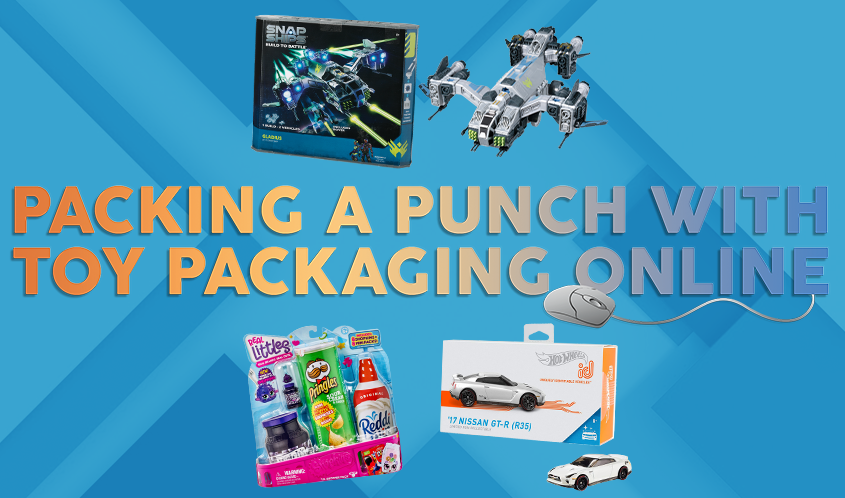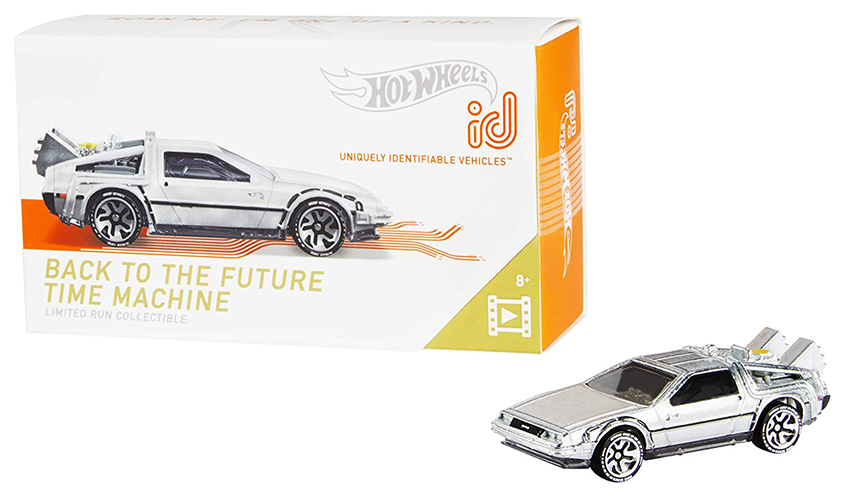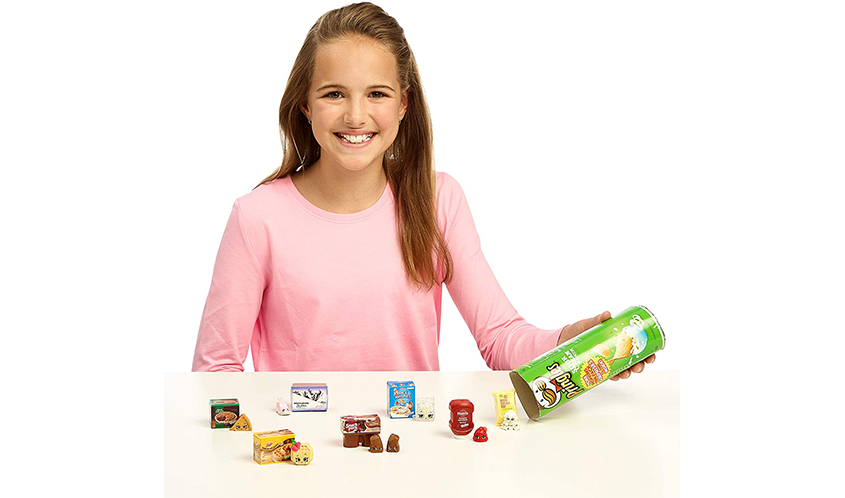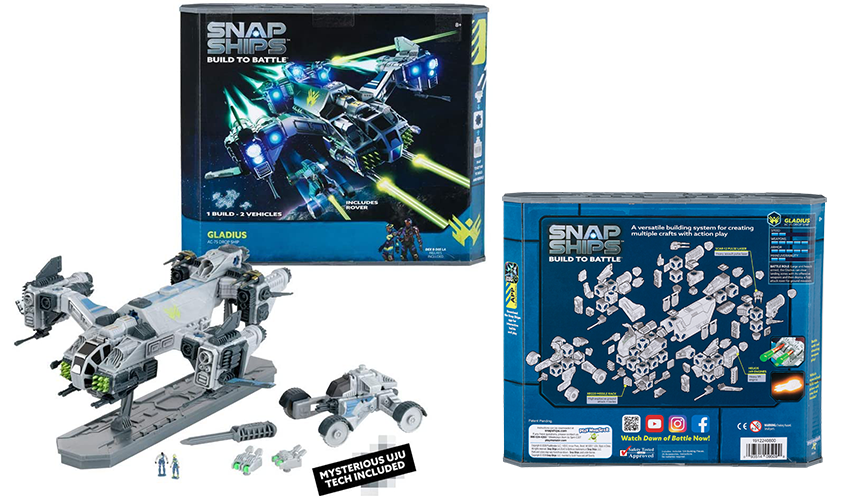
by TED MININNI, president and creative director, Design Force
It’s no surprise that consumers are doing more of their shopping online now than ever before. Online shopping was already prevalent for many categories prior to the pandemic, but the shift to online retail became significant once stores selling nonessential items began closing back in March. This change in behavior early on during the pandemic happened purely out of need, of course. Consumers were buying face masks and groceries online to adhere to stay-at-home orders.
Fortunately for our industry, the toys and games category enjoyed quite a surge in online sales almost immediately as we entered quarantine, with parents trying to keep their kids entertained while working from home. In fact, according to Bazaarvoice (a website that collects user-generated content to provide shopper data for buyers), the category has had one of the largest increases in page views (135%) in 2020 versus a year ago. And, although growth has decreased a bit as slow reopenings began to take place globally, page views for toys were still strong in June at 128%.
If this trend continues, and shopping online for toys becomes the new norm for the foreseeable future, what role will toy packaging play in online sales? To answer this question, we’ll first need to evaluate the role it will no longer play.
A FIRST IMPRESSION
The role of toy packaging at mass retail is to capture the attention of consumers among the clutter and chaos of the toy aisles in a matter of seconds. Its goal is to make the brand stand out among the competitive offering and influence consumers to engage with the product it contains through structural shape, branding, color, imagery, and marketing communication. Unless the consumer is browsing the toy aisles knowing exactly what they want, the decision to pick up a particular product and engage with it at retail is quite impulsive. When shopping online, consumers search for the product, brand, or type of toy that they want to purchase. They’re then served up imagery of products that align with their search. If the toy’s packaging is even shown, it’s often quite small, or it’s secondary to the out-of-box product imagery. As a result, the impulse purchase, as well as packaging’s role in it, is all but lost.
It’s through packaging that consumers have their first tangible experience with a brand and the products it represents. Therefore, a product’s packaging must make a great first impression. Often referred to as the first moment of truth, this experience plays a critical role in the consumer’s purchase decision at retail. With online shopping, the tactile experience with the product happens after the purchase is made rather than during the decision-making process. Consumers can no longer make their decision while holding the toy packaging in their hands, experiencing the size and weight of the product, or engaging with a “Try Me!” to learn about the product’s features and its play pattern. And, in most cases, they can’t turn the package around to view other panels and gain further information about the product. Instead, consumers have only the short description and a handful of bulleted features to rely upon for information about the product. At best, they’ll see a front view of the product’s packaging buried among the product photo thumbnails within the listing, and on occasion, the back panel will be included.

With this in mind, some brand owners may feel that package design no longer retains the same level of importance online as it does at retail. In the context of online shopping, where the competitive offering is only a mouse click or swipe away from the product being considered, it is imperative that toy packaging works even harder to establish an emotional connection with consumers. It must tell the brand story, convey the play pattern, and generate excitement in a simple, synergistic manner, and without becoming too cluttered.
Take Mattel’s Hot Wheels ID die-cast cars, for example. This product line gives kids the ability to download the classic, 1:64-scale cars into a mobile gaming app. Using near-field communication (NFC), kids can scan the car and retrieve the necessary information to create an avatar that appears in the game. Search for these cars on Walmart’s website and you’ll find that its sleek, sophisticated, white packaging dominates the first image that appears on the page. The appeal of the package design leans more toward consumer electronics than toys to convey the appropriate tone for the product line.
Hot Wheels ID branding holds the upper right corner of the front panel, while a beautiful image of the car is parked on top of electronic circuitry graphic architecture coming in from the left. The name of the car appears beneath the image, and the segment icon appears on a triangular snipe in the lower right corner in the segment’s color. Browse through the image thumbnails and you’ll find another view of the package with the front panel lifted to reveal a screen from the mobile app showing a rendering of the car and its performance rating while the car itself is visible through a die-cut window. This overhead view of the actual product is surrounded by the series number, product name, segment name, and icon in white over the segment color and a tone-on-tone, segment-specific background element. These images provide an experience much like one that potential customers would have with the product at retail by allowing the packaging to tell the brand story, suggest the play pattern, and convey collectibility.

PACKAGING AS AN ADDED VALUE
It is often said that packaging is just as important as the product it contains. This is certainly true in the context of blind box toy packaging — the toy industry’s way of packaging collectible products so that kids don’t know what’s inside until the product is purchased and the package is opened. The packaging Moose Toys created for Shopkins Real Littles Lil’ Shopper Packs features real brands found in grocery stores. They’re packaged in blister cards with rendered product illustrations on inserts placed on either side of a Pringles can. And that’s where the unboxing fun begins. Amazon shows the packaging as it is presented to consumers at retail, features another image of kids in the process of opening the Pringles can, then completes the unboxing experience by showing the Pringles can turned over with its contents displayed in a way that clearly conveys that they were hidden within the Pringles can. Presenting packaging in this way leaves no doubt in the minds of consumers that the unboxing experience — and the element of surprise that it provides — brings further value to the product line.

TELL A BRAND STORY
PlayMonster recently launched a new building system called Snap Ships, which allows kids to create multiple, intricately detailed spacecraft models with a variety of action features. Each Snap Ships set includes pieces to build a ship or vehicle, and all of the sets are interchangeable, so kids can freeform build in any way they want. The construction toy category is a tough one to enter in today’s marketplace. To do so during a global pandemic — when online shopping is the most likely purchase method — presents its own set of challenges, such as how best to convey the fundamentals of the building system, its versatility, its fun and unique features, and the play pattern that’s encouraged after kids complete the builds. However, due to its great package design, viewing the Snap Ships product line on Amazon leaves no question unanswered. The initial image of each set shows the front panel of the package in scale with the completed model. It also shows the package lid doubling as a display base for the model. Another image of the back panel of the package features an exploded view of every part that’s included in the set and shows how the basic building blocks and specialty pieces interconnect to build something quite amazing.
It’s clear that showing multiple views of a toy’s packaging within its online listing is key. Simply showing the front panel isn’t enough when there’s a level of complexity to the product’s attributes or if there’s an unboxing experience involved. Multiple images of the product’s package are necessary to complete the brand story and convey value.
Lastly, let’s not forget the impact that well-conceived and well-executed toy packaging will have on consumers returning to the site to purchase other products in your line. With the unboxing experience being heralded as a way to add value to a brand, package design continues to work to the brand’s advantage, even after the purchase is made.
Don’t underestimate the importance of toy packaging in e-commerce. Although its role online differs from its role at retail, the goal remains the same. It still must generate excitement about the brand and the product it contains. And it must engage consumers in a way that truly motivates their decision to buy.
This article was originally published in the October 2020 edition of the Toy Book. Click here to read the full issue!

